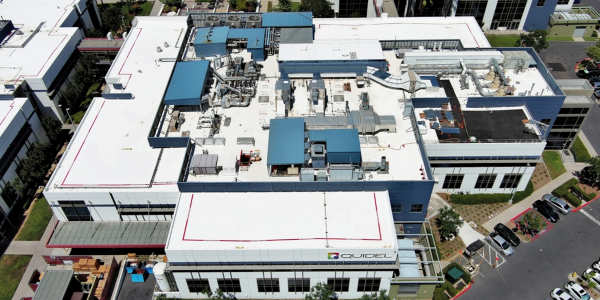The Essentials of Roof Restoration

By Alec Doniger.
Learn how to evaluate and execute a roof restoration project.
Years ago, if a roof was damaged and in need of repair, the solution was to tear off the roof completely and replace it with an entirely new one. However, the roofing repair technology of today has come a long way. In modern times, many different types of roof restoration procedures are available to those considering one.
Many different types of roofs today are good candidates for a restoration procedure – like bitumen roofs, for example. There are still some cases, however, where a complete roof replacement is still necessary. According to the experts at APOC, “Building codes and standards often state any roof that is more than 20% saturated must be fully torn off and replaced.” To determine how intensive a restoration is necessary, you can perform a non-destructive, visual test.
If water is collecting in certain areas, this may indicate structural sagging in the deck. If, while walking on the roof, you feel soft areas, this could mean the insulation is saturated. Often, rot, rust and decay are visible from inside the building. Seeing these areas may help you determine where the worst damage is. A splitting membrane may also be visible, but usually only the most skilled professionals see this kind of damage. Depending on what you see, it will become clear whether a full roof replacement is needed or not.
If the roof is a candidate for restoration, the APOC team shares some fundamental steps that should be taken to ensure a successful installation. Prepare the roof by removing debris and cleaning the surfaces. Priming is then necessary so that patches adhere to the roof. When it is time to patch, make sure that all areas on the roof are watertight. A long-lasting, protective coating should be applied at the end so that your work stands the test of time.
Roof restoration is a much more affordable process than replacing the entire roof outright. Therefore, it’s a good idea to test the roof before deciding to install an entirely new one. If the roof is capable of being restored, doing it properly will afford the property owners an extensive future with their new roof.
APOC says that for contractors, time is money. “One of the most significant benefits of a restoration project is that it can be completed relatively quickly. If you can bring an existing roof back up to its original performance level with sound restoration methods, you can move on to your next job faster.”
Learn more about APOC in their RoofersCoffeeShop® Directory or visit apoc.com.
Original article source: APOC
Recommended For You

Answering 5 essential questions about spray foam roofing
Read More ...
Master snow retention at this educational seminar!
Read More ...
How to build space for kids to grow in urban areas
Read More ...
















Comments
Leave a Reply
Have an account? Login to leave a comment!
Sign In